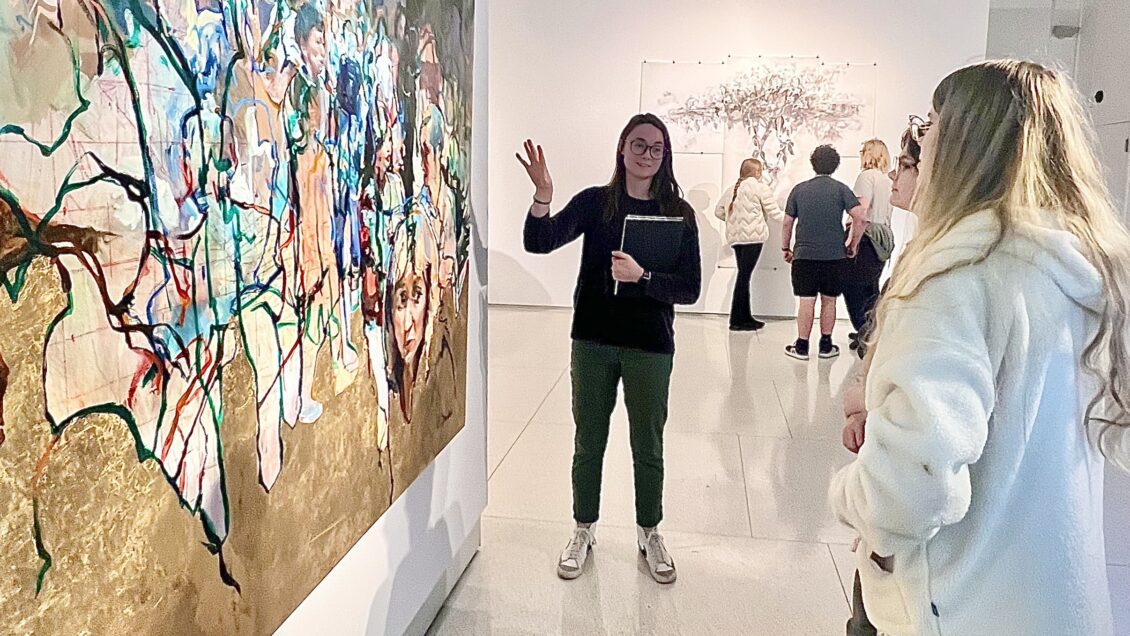
At the heart of Clemson University’s arts and cultural life is the Lee Gallery, a space more than just a venue for visual exhibitions. It’s a dynamic, evolving and deeply collaborative environment where students don’t just observe art; they create, curate, install and present it. The gallery is a hub for experiential learning, contributing to Clemson’s No. 1 Student Experience.
“The Lee Gallery is like a hidden engine for cultural and creative development on campus,” said Maya McDonald ’25, an MFA candidate and gallery assistant. “You learn more about artwork the more you share it with different community members because the audience brings their life experiences to interpreting the artwork.” McDonald’s insight captures the Gallery’s essence as a place where students grow in their artistic abilities, empathy, communication and confidence.
Gallery Director Denise Woodward-Detrich sees this transformation every day. “I like to stay behind the scenes,” she said. “That way, students take full ownership of their work. I provide experience, resources and opportunities. They embed their vision, and I help them bring it to life.”
And that vision is far-reaching. From large-scale exhibitions and archival curation to public speaking engagements and collaborative outreach, the Lee Gallery fosters professional practices that impact the Clemson campus and the wider community.
Experiential Learning in Action
In one recent project, McDonald collaborated with art consultant Harriett Green and several alumni from Clemson’s School of Architecture on the “Rural Witnesses: Retracing and Reimagining Rural Architecture.” Her role involved extensive photographic research and preparation for the exhibition, giving her firsthand experience in project management, visual communication and collaboration with external partners.
MFA graduate students Jennifer Smith ’25 and McDonald also co-curated the “Conversation” Exhibition, which explored interpersonal relationships through different visual strategies and compositions. The exhibition was so compelling that Woodward-Detrich dedicated a gallery budget to support it. The students led discussions with art appreciation classes, classes taught in the College of Education, high school groups and community members, demonstrating Clemson’s commitment to extending cultural education beyond its walls.

“They generated their talking points and led critical discussions, linking visual elements between the works and ideas for their audiences,” said Woodward-Detrich. “Their project educated others and helped the graduate students develop essential public speaking, research and leadership skills. This type of activity is what engaged learning is about.”
Cultural Impact That Extends Statewide
The Lee Gallery’s influence extends far beyond campus. Take, for instance, the upcoming exhibit curated by Amanda Musick ’18, an MFA alumna and faculty member, featuring photographs from the Clemson Architectural Foundation’s collection. After its debut at Cooper Library, the exhibit will travel across South Carolina, expanding public access to Clemson’s resources and research while providing Musick with valuable curatorial and collection management experience.
Another standout example is Tanya Johnson ’26, a current MFA candidate specializing in photography, who is using the University’s photo collection to develop workshops that teach community members how to express themselves through photography. “Her project is a perfect example of how we transform lives through art,” said Woodward-Detrich. Her educational research impacts mental health, strengthens community relationships and drives economic development through cultural programming.”
Elevating the Clemson Experience
The Gallery also supports foundational experiences for undergraduates. MFA alumna and faculty Mandy Ferguson’s ’18 beginning printmaking class produces a campus-themed print portfolio that celebrates places and experiences across Clemson’s campus where students find the most joy. Funded by the Lee Gallery, this initiative ends in a print exchange with each student donating one framed piece to be exhibited across Clemson’s venues, including the Lee Gallery, R.M. Cooper Library and possibly places like the new Center for Career and Professional Development in the Nieri Family Alumni and Visitor Center.

McDonald, now also a painting instructor, will showcase her students’ abstraction projects during the May graduation event. “They’re not just learning how to paint; they’re learning how to prepare their work for a gallery showcase and write about their ideas for the public, present and install their work — all essential skills in professional arts practice,” she noted.
A Living Lab for Future Arts Leaders
With support from faculty such as Andrea Feeser, the Gallery and art faculty are developing career resources for B.A. and BFA students by connecting them with alumni and mapping out career pathways. “This kind of strategic collaboration sets students up for success post-graduation,” said Woodward-Detrich. “It’s about transforming lives on campus and providing a pathway for our graduates in the broader artworld context.”
Additionally, Lee Gallery’s partnerships with the Brooks Center for the Performing Arts and local institutions like the Hampton III Gallery in Greenville, S.C., further integrate Clemson students with South Carolina’s vibrant arts scene. Current collaborations include MFA Alumnus Winston Wingo ’81 retrospective and a dual-site exhibition featuring a prominent Greenville artist, Gerry Wubben, which will include community engagement events planned for fall 2025.
A Non-Traditional Classroom with Lasting Impact
From Cooper Library to the Brooks Center for the Performing Arts, Strode Tower to the Nieri Center, the Lee Gallery’s reach is visible, but its impact often happens behind the scenes. Students learn to manage budgets, write contracts, frame and handle art and engage with the public. They leave the program with a degree and real-world experience that elevates their confidence, capability and skills to advance careers.
“One of the things I love most about my job,” said Woodward-Detrich, “is that I get to work on so many projects that reach into the University and the community. Every day is different and contributes to the Clemson Experience in meaningful and tangible ways.”
In this way, the Lee Gallery is not simply a physical space; it’s a model of engaged learning and cultural stewardship. By prioritizing student empowerment, creative exploration and professional preparation, it delivers on Clemson’s promise to transform lives, drive economic development and impact South Carolina and beyond.
END
The Lee Gallery at Clemson University
The Lee Gallery at Clemson University offers the campus and surrounding community access to regional, national and international artists through curated exhibitions, MFA thesis and BFA senior shows, artist talks and public events. The gallery highlights creators and researchers from diverse backgrounds and disciplines. Its exhibitions explore themes that intersect with research in the Department of Art, across the University and within the broader visual arts community.
Art has been central to Clemson University since its founding, rooted in Thomas Green Clemson’s vision of a “high seminary of learning.” As a painter, collector and arts advocate, he recognized the value of the arts to society. Today, Clemson continues this legacy by integrating art across campus spaces.
Visitors are encouraged to engage with exhibitions, public art and special events. All exhibitions, artist talks and receptions are free and open to the public thanks to the generous support of donors.
For event details and to learn more, visit clemson.edu/art. To support the Lee Gallery, visit Lee Gallery Giving.
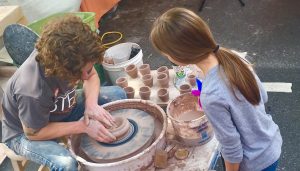
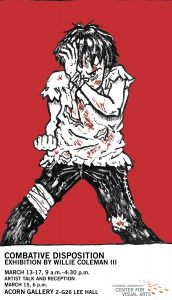


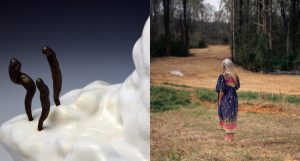 CLEMSON – “
CLEMSON – “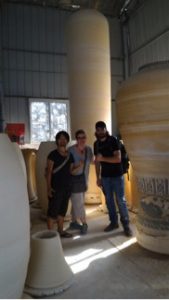 Deighton Abrams, MFA (Ceramics), was the recipient of the Jeanette S. Dreskin Award, general Department of Art Fellowship and a Professional Enrichment Grant (PEG). These scholarships and awards are obtained through Clemson University. They are awarded based upon the hard work and merit of the applicant. Deighton’s graduate thesis project won him these awards. He chose to use his scholarships to attend the International Society for Ceramic Art Education and Exchange (ISCAEE) Symposium in China. Deighton also traveled to Iceland for further graduate thesis research.
Deighton Abrams, MFA (Ceramics), was the recipient of the Jeanette S. Dreskin Award, general Department of Art Fellowship and a Professional Enrichment Grant (PEG). These scholarships and awards are obtained through Clemson University. They are awarded based upon the hard work and merit of the applicant. Deighton’s graduate thesis project won him these awards. He chose to use his scholarships to attend the International Society for Ceramic Art Education and Exchange (ISCAEE) Symposium in China. Deighton also traveled to Iceland for further graduate thesis research.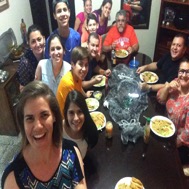
 Hannah Gardner, BFA, obtained a scholarship from the Calhoun Honors College. She used this award to supplement a three-week art program excursion to Tanzania, Africa. While in Tanzania, she was exposed to numerous art careers, including shadowing art therapists and teaching art classes to neighboring villages.
Hannah Gardner, BFA, obtained a scholarship from the Calhoun Honors College. She used this award to supplement a three-week art program excursion to Tanzania, Africa. While in Tanzania, she was exposed to numerous art careers, including shadowing art therapists and teaching art classes to neighboring villages.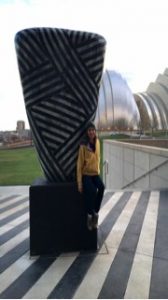
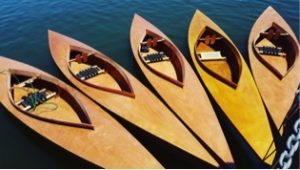 Carey Morton, MFA (Sculpture), spent his summer at the Penland School of Crafts in Spruce Pine, North Carolina. While at Penland, he was a part of a team hand carved Fox Canoes. Morton acquired unique building technique skills and expanded his artistic knowledge with this special opportunity.
Carey Morton, MFA (Sculpture), spent his summer at the Penland School of Crafts in Spruce Pine, North Carolina. While at Penland, he was a part of a team hand carved Fox Canoes. Morton acquired unique building technique skills and expanded his artistic knowledge with this special opportunity.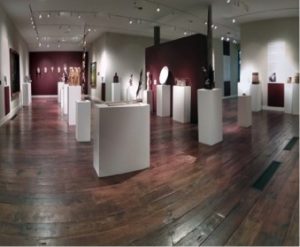 We are so proud of all of the impressive things our students were able to experience and accomplish over the past few months. The Department of Art is committed to continue to provide scholarship, internship and travel opportunities to students who have shown dedication to their work in and out of the classroom.
We are so proud of all of the impressive things our students were able to experience and accomplish over the past few months. The Department of Art is committed to continue to provide scholarship, internship and travel opportunities to students who have shown dedication to their work in and out of the classroom.